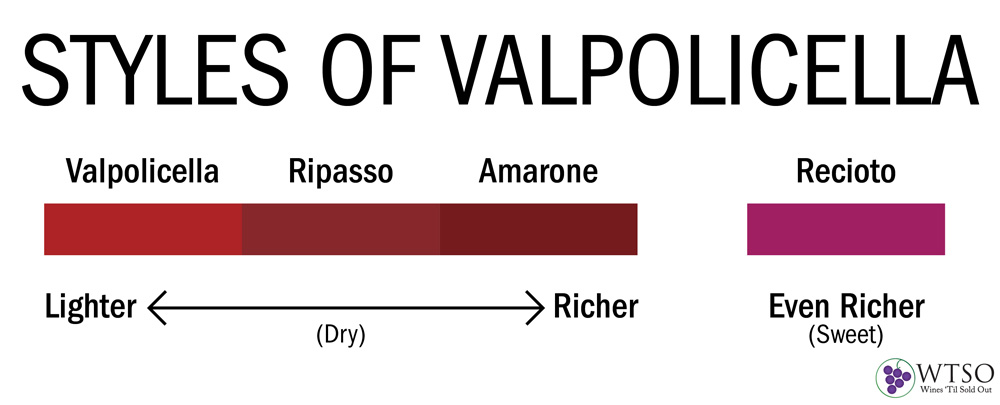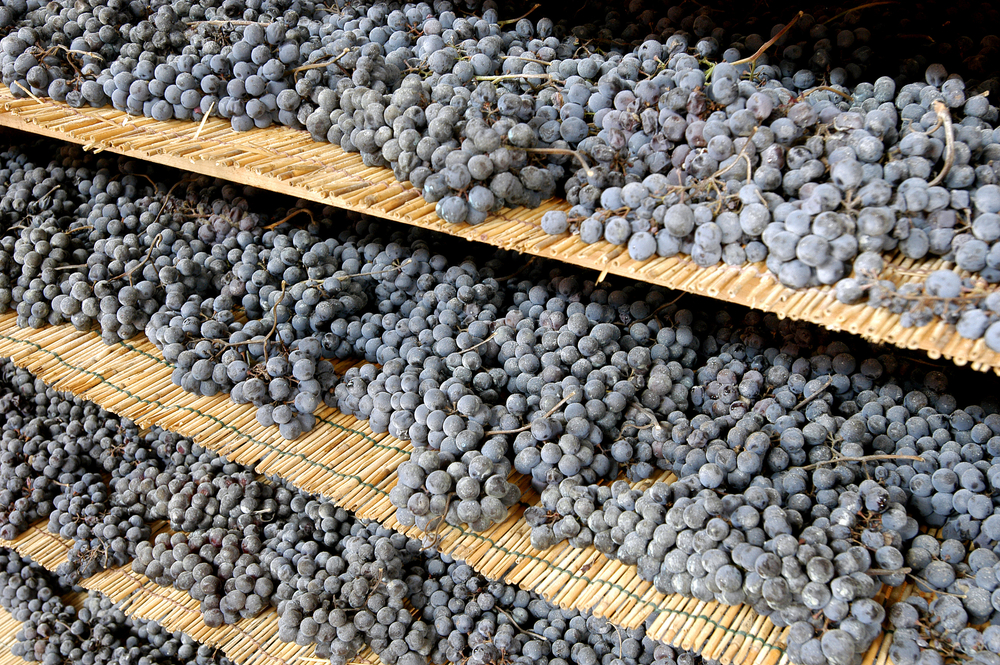This post is the first in our two-part Valpolicella and Amarone Series. You can learn about the region and the winemaking process in our second post.
The terms ‘Valpolicella’ and ‘Amarone’ are applied to a wide variety of wines that have become popular in the United States in recent years. Part one of our series on Valpolicella and Amarone will help you to know what to expect from the various styles – how they taste and some popular food pairings. Hopefully, you’ll be inspired to try some of these lovely wines, and find new favorites along the way. Part two in the series will explore the region, grapes, and winemaking techniques in more depth, to help give you a more complete understanding of one of Italy’s top red wines.
Valpolicella (“val-poh-li-chel-uh”) and Amarone (“a-mah-ROH-nay”) are members of a family of wines from the same area, and they are made from the same grapes. They are both produced in the Veneto region, near the cities of Venice and Verona, from a blend of local red grapes. Below, you will find a description not only of Valpolicella and Amarone, but their variations, too. This way, you can compare the differences of their styles.

Valpolicella
This wine is bright, medium- to light-bodied, and fresh, with a ruby color and vivid flavors of strawberry, raspberry, and sour cherry, with a touch of spice. Valpolicella is a good alternative to Pinot Noir or Beaujolais, and pairs well with poultry, salmon, seafood stew, and grilled vegetables. These are normally the most affordable of the Valpolicella wines, and they are good for everyday drinking.
Valpolicella Classico
The term ‘Classico’ refers to the fact that these wines are grown in a section of the Valpolicella region that is historically recognized for better quality. A bottle of Classico will be similar to regular Valpolicella, but it will usually have a wider array of aromas, more depth of flavor, and a longer finish. These wines are still affordable, and can offer great quality for the price.
Valpolicella Ripasso
These wines are fuller than those mentioned previously, with darker color, medium body, and a broader set of flavors. In addition to the berry fruits of regular Valpolicella, Ripassos will have notes of blackberry, plum, cocoa, nutmeg, and espresso. They pair nicely with burgers, grilled steaks, pasta with tomato sauce, or pizza.

Amarone della Valpolicella
Amarone is extremely full-bodied and rich, with high alcohol and very concentrated fruit flavors, including blackberry, cherry jam, plums, raisins, chocolate, and vanilla. If you like powerful, fruity, yet dry red wines, Amarone is for you. They can be quite expensive, but their increasing popularity has lead to a corresponding increase in production, so prices are falling. Amarone is wonderful with braised meat dishes, like oxtail stew or bolognese. Its soft structure and rich fruit also make it pleasant to drink on its own. A glass of Amarone might make an excellent digestif, for example.
Recioto della Valpolicella
An extremely sweet dessert wine, Recioto is actually the oldest style in Valpolicella. Its full, viscous texture, and opulent flavors of candied fruit, honey, ginger, and baking spice make it a delight with desserts of any kind, but especially those that feature red fruits in the recipe. What could be better with cherry or strawberry pie? Recioto is unfortunately rare these days, but if you find a bottle, you should give it a try.
Now that you’ve learned about the different styles and tastes of these delicious wines from Italy, you can compare and contrast the tastes for yourself. Stay tuned for part two of our series this Thursday, which will help you learn more about the regions and different winemaking techniques of Valpolicella and Amarone.



